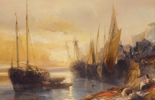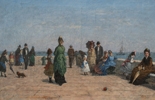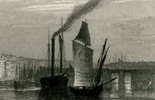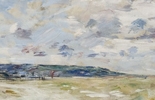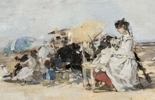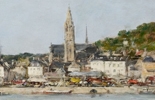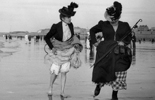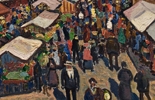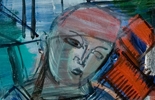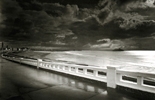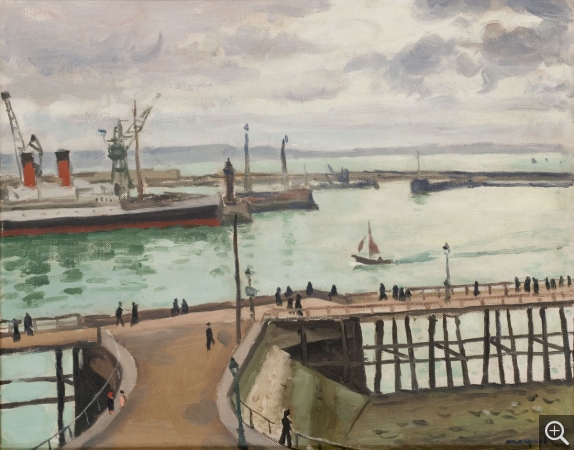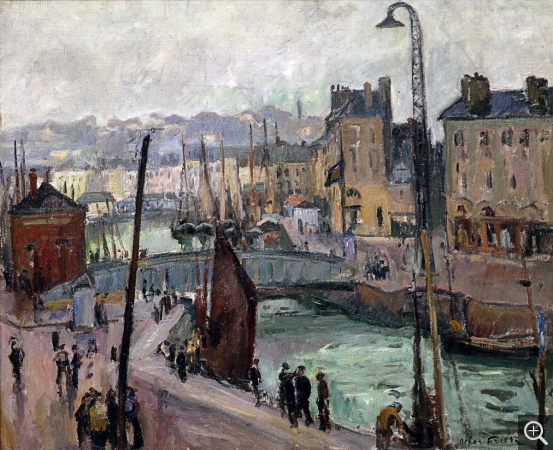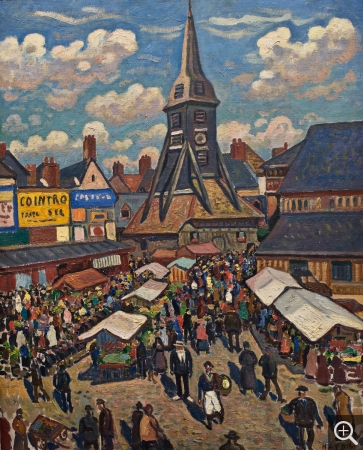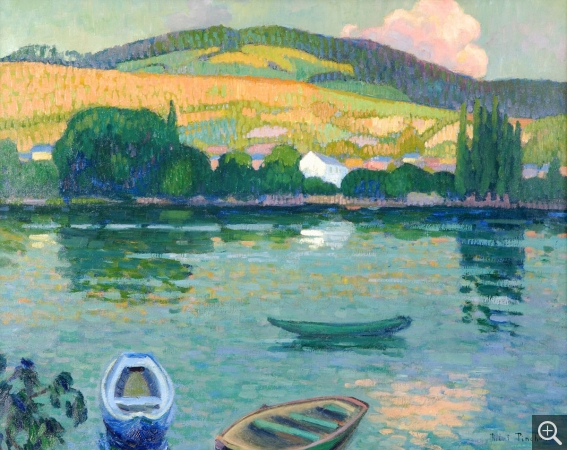L’estuaire de la Seine, l’invention d’un paysage
Painting in the early 20th century underwent quite a radical change with the shift from a naturalist representation of reality to a reinvented reality, something Raoul Dufy explained as follows: "Painting means creating an image which is not the image of the appearance of things, but which has the power of their reality." This process was both accompanied by and based on a liberation of colour, henceforth used arbitrarily, and a break with the rules of perspective.
The Seine estuary would once again serve as the setting for one of these pictorial revolutions: Fauvism. While the artists of the Rouen School, and the most Fauve of them all, Robert Pinchon, still continued in the Impressionist style but added touches exhibiting a new intensity of colour, three artists from Le Havre—Dufy, Friesz and Braque—took full part in the Fauve movement. Their conversion took place a year after the famous Salon d’Automne of 1905, referred to as "La Cage aux Fauves", but they incited others to join them in the adventure—artists like the Saint-Delis brothers, collectors from Le Havre who were the first to purchase works by Matisse and his friends—and attracted fellow Fauves like Marquet to Le Havre. Their brushes brought the Normandy coast, Le Havre and Honfleur to life in bold, bright colours.
The Fauve adventure soon came to an end, and the artists went on to forge their own paths. Such was the case of Vallotton, who had ties with the Nabis, and who came to Honfleur each summer from 1901 and 1920 to chart his own course. Working outdoors, he produced only sketches—or photos—before returning to his studio overlooking the small port, where he recreated the landscape on canvas from memory showing great synthetic skill and daring use of colour.
The Seine estuary would once again serve as the setting for one of these pictorial revolutions: Fauvism. While the artists of the Rouen School, and the most Fauve of them all, Robert Pinchon, still continued in the Impressionist style but added touches exhibiting a new intensity of colour, three artists from Le Havre—Dufy, Friesz and Braque—took full part in the Fauve movement. Their conversion took place a year after the famous Salon d’Automne of 1905, referred to as "La Cage aux Fauves", but they incited others to join them in the adventure—artists like the Saint-Delis brothers, collectors from Le Havre who were the first to purchase works by Matisse and his friends—and attracted fellow Fauves like Marquet to Le Havre. Their brushes brought the Normandy coast, Le Havre and Honfleur to life in bold, bright colours.
The Fauve adventure soon came to an end, and the artists went on to forge their own paths. Such was the case of Vallotton, who had ties with the Nabis, and who came to Honfleur each summer from 1901 and 1920 to chart his own course. Working outdoors, he produced only sketches—or photos—before returning to his studio overlooking the small port, where he recreated the landscape on canvas from memory showing great synthetic skill and daring use of colour.

- Albert MARQUET (1875-1947), The Outer Harbour of Le Havre, 1934, canvas pasted on board, 33 x 40.8 cm. © MuMa Le Havre / Florian Kleinefenn
- Othon FRIESZ (1879-1949), Le Havre, Bassin du Roy, oil on canvas. © MuMa Le Havre / Florian Kleinefenn
- Henri Liénard de SAINT-DÉLIS (1878-1949), Market in Honfleur, oil on canvas, 81 x 65 cm. © MuMa Le Havre / David Fogel
- Robert Antoine PINCHON (1886-1943), The Hills of Belbeuf, ca. 1909-1910, oil on canvas, 65 x 81 cm. Private collection. © All rights reserved


